#TRAPPIST-1h
Explore tagged Tumblr posts
Text
TRAPPIST-1 Characters

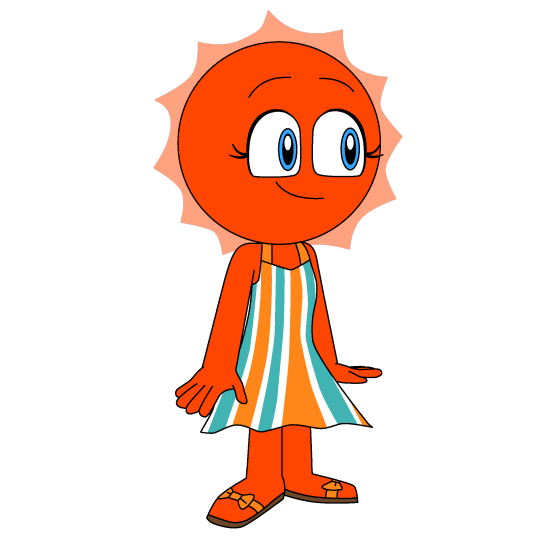
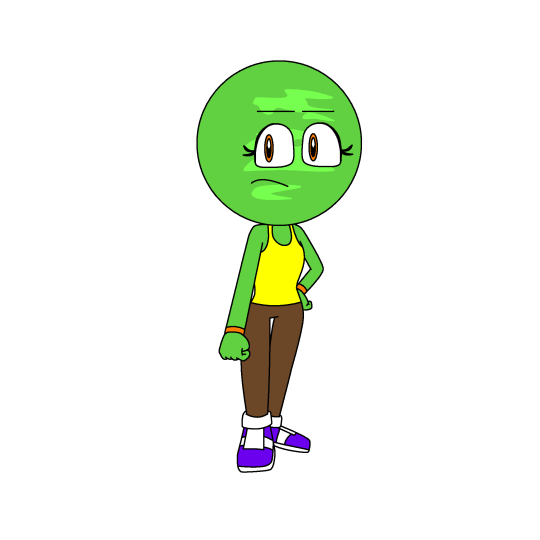
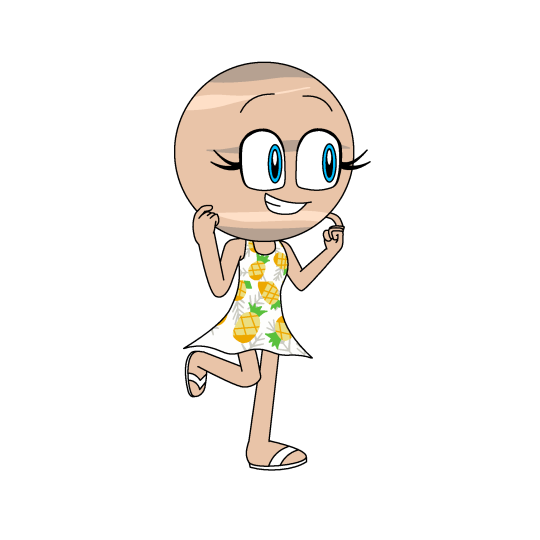
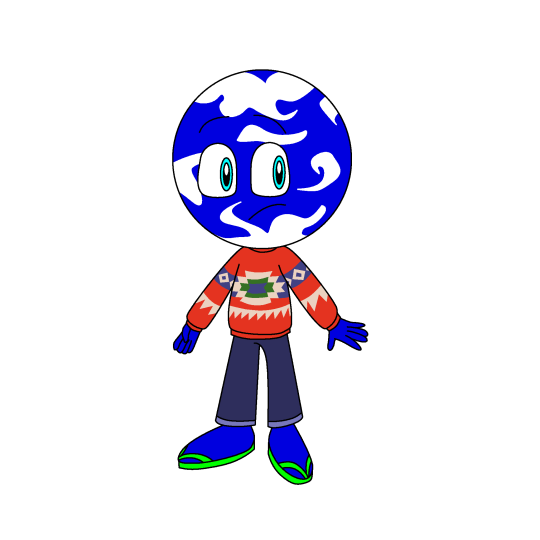
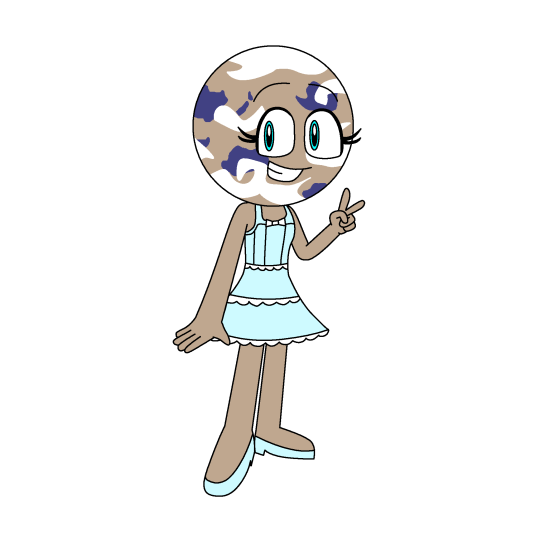
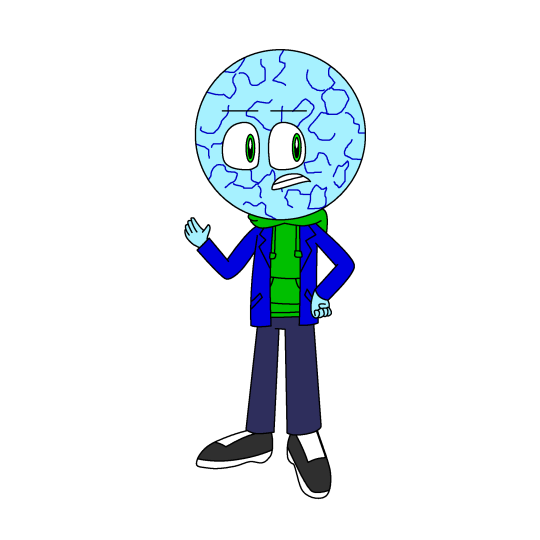
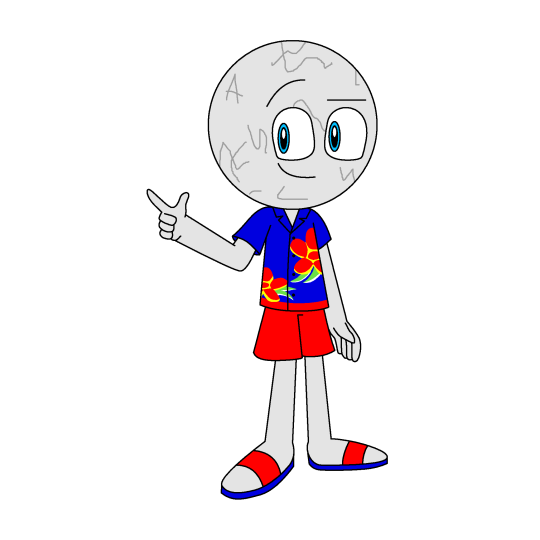
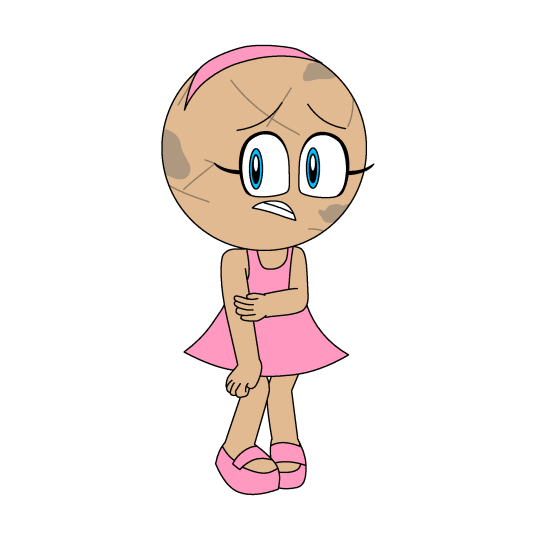
TRAPPIST-1, b, c, d, e, f, g, h
#Neptune Adventure#TRAPPIST-1#Characters#Vanilla#Fiona#Bonbon#Curt#Whitney#Tundra#Apollo#Glacia#Design#Character#Art#Planets#Planet#TRAPPIST-1b#TRAPPIST-1c#TRAPPIST-1d#TRAPPIST-1e#TRAPPIST-1f#TRAPPIST-1g#TRAPPIST-1h
6 notes
·
View notes
Text
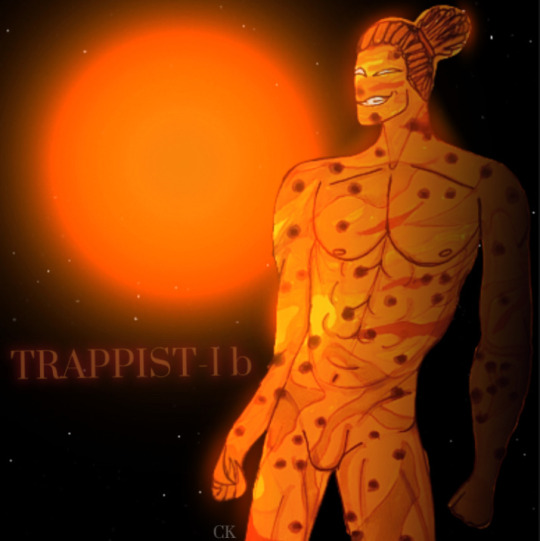


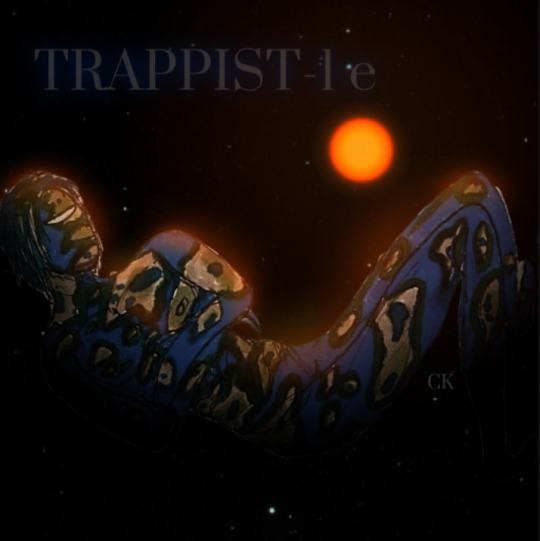


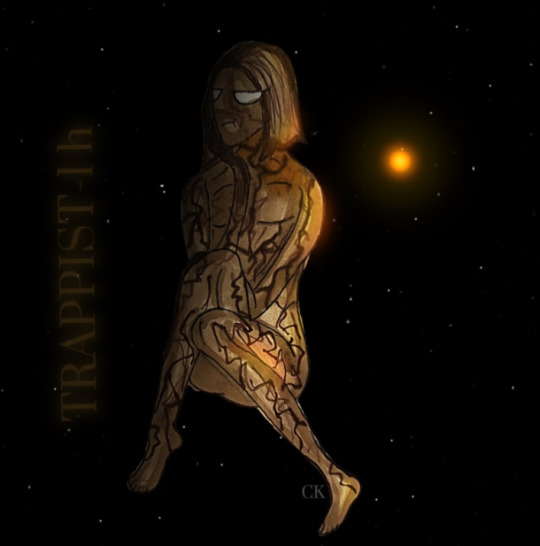
Did this a couple days ago. All 7 planets of the TRAPPIST-1 system.
#planethumans#trappist 1#Trappist 1b#Trappist 1c#Trappist 1d#Trappist 1e#Trappist 1f#Trappist 1g#Trappist 1h#art#solarballs fandom
1 note
·
View note
Note
What kind of music do the (established) stars & planets like?
Sirius A : Phonk music
Sirius B : Jazz music
Rigil Centauri : classical music
Toliman : Hip-Hop music
Proxima Centauri : Rock music
Trappist-1 : Pop music
Trappist-1b : hard rock music
Trappist-1c : pop music
Trappist-1g : rap music
Trappist-1h : punk rock music
1 note
·
View note
Text
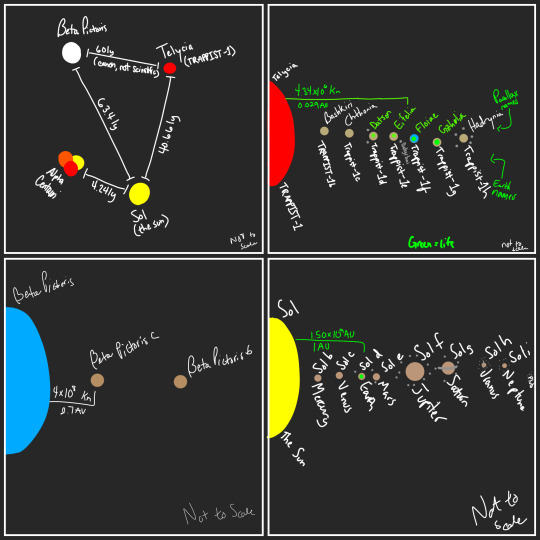
(Digital Handwriting reveal lol)
Quick little universe glossary (the parentheses are the names that exist in Earthen astronomy - i.e. they have wikipedia pages)
Most of the known life is around the ultra-cool dwarf star Telycia (based on Trappist-1) and it has seven planets around it. Bashkiri (Trappist-1b), Chthonia (Trappist-1c), Datson (Trappist-1d), Eifelia (Trappist-1e), Floiae (Trappist-1f), Gzhelia (Trappist-1g), and Hadrynia (Trappist-1h). Life is confirmed to exist on Datson, Eifelia, Floiae, and Gzhelia. The first civilization to go out exploring the stars was Eifelia, which is why it's so much of a significant presence. Most of these are named after Earthen geological time periods (mostly subcategories of the Cambrian) and just kind of corrupted for my purposes because most of them are closer to demonyms so I had to do what I had to do.
Bonus fun facts about the Telycian system: I imagine Datsonians as kind of looking halfway between humans and Diictodon. Don't ask how that works. I didn't get that far. But Diictodon is just a little guy and I want him to exist. Eifelians probably look like humans so then the makeup budget is less lol. Floiae is an ocean planet and Floians are essentially bipedal cuttlefish, w-shaped pupils and all. They're also kind of like if seaweed has consciousness. As for the Gzhelians - they look like platybelodon and I don't want to elaborate. Gzhelia has a very low orbital eccentricity, so that's why the Gzhelian described in the story has that air conditioner. 200 kelvin is like negative 73 degrees Celsius. So uh it's very cold.
For the sake of trying to not make my presumably-Earthen readers cry because of the amount of new planet names I'm throwing around, I've tried to stick to the Mercury, Venus, Earth naming system, although the official Parallax names are going to be Sol b, Sol c, Sol d. Yes this is the same naming convention used by Earthen Astronomy to name exoplanets, as can be seen with the Trappist-1b etc. names above. Yes, it does start with b. I don't know why, I'm just trying my best here.
Beta pictoris is essentially the same both inside the au and out in the real astronomical world we know, which is nice. It is worth noting that there are two confirmed exoplanets--Beta pictoris b and Beta pictoris c--and B pic c is the one closer to the star because it was discovered second.
Conversions: 1 Eifelia year ~= 6 Earth days. That's why all of the conversions are absolutely WILD. Eifelia masses and Earth masses are pretty close to equivalent (4.13 * 10^24 kg vs. 5.97 * 10^24 kg). Earth's constant of gravitational acceleration is 9.81 m/s^2. Kelvin = Celsius + 273.15. Be glad I didn't bring out the fun temperature scales (Rankine, Delisle, Reaumur, Romer, Newton. I was kind to all of you). Stellar Classifications have a lot of systems, but the one I've seen the most is OBAFGKM where O is the hottest and bluest and M is the coolest and reddest. The sun is a G-type star.
Q&A: Why does Eifelia use the metric system? Shut up. I needed to make this understandable to you, random reader. Stop questioning my motives. What's going on in the code stuff? The first one is just importing some libraries, then Dex uses a machine learning model called a KNN model (don't worry about it) to determine the erosion, then goes into a linux command line to turn off the firewall, and then ends it with a loop. The code parts are written in python, excepting the linux, of course. All of the hashtags are just comments. They aren't read by the compiler. They're partially reader assistance and partially me being silly at the end there. What is wrong with you? I don't know either. What happens if I click on the links? The one is a link to scioly and the other is a throwaway spreadsheet. I don't know why you'd care that much but have fun. (Feel free to add more questions in the replies lol I have a feeling none of this makes sense.)
0 notes
Photo

#ffddaf || #f9be91 || #d09d72 || #292825 || #263138
35 notes
·
View notes
Photo
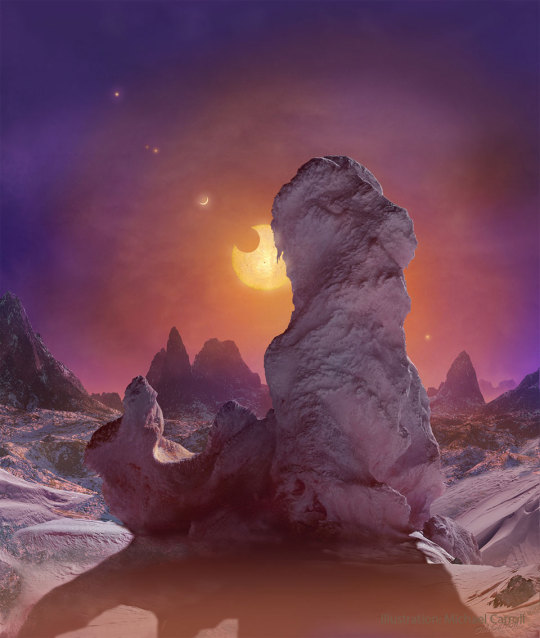
2023 February 1
The Seventh World of Trappist-1 Illustration Credit & Copyright: Michael Carroll
Explanation: Seven worlds orbit the ultracool dwarf star TRAPPIST-1. A mere 40 light-years away, many of the exoplanets were discovered in 2016 using the Transiting Planets and Planetesimals Small Telescope (TRAPPIST) located in the Atlas Mountains of Morocco, and later confirmed with telescope including NASA's Spitzer Space Telescope. The TRAPPIST-1 planets are likely all rocky and similar in size to Earth, and so compose one of the largest treasure troves of terrestrial planets ever detected around a single star. Because they orbit very close to their faint, tiny star they could also have regions where surface temperatures allow for the presence of ice or even liquid water, a key ingredient for life. Their tantalizing proximity to Earth makes them prime candidates for future telescopic explorations of the atmospheres of potentially habitable planets. All seven exoplanets appear in the featured illustration, which imagines a view from the most distant known world of this system, TRAPPIST-1h, as having a rocky landscape covered in ice. Meanwhile, in the imagined background, one of the system's inner planets crosses in front of the dim, orange, nearly Jupiter-sized parent star.
∞ Source: apod.nasa.gov/apod/ap230201.html
94 notes
·
View notes
Photo

The Seventh World of Trappist-1 Seven worlds orbit the ultracool dwarf star TRAPPIST-1. A mere 40 light-years away, many of the exoplanets were discovered in 2016 using the Transiting Planets and Planetesimals Small Telescope (TRAPPIST) located in the Atlas Mountains of Morocco, and later confirmed with telescope including NASA's Spitzer Space Telescope. The TRAPPIST-1 planets are likely all rocky and similar in size to Earth, and so compose one of the largest treasure troves of terrestrial planets ever detected around a single star. Because they orbit very close to their faint, tiny star they could also have regions where surface temperatures allow for the presence of ice or even liquid water, a key ingredient for life. Their tantalizing proximity to Earth makes them prime candidates for future telescopic explorations of the atmospheres of potentially habitable planets. All seven exoplanets appear in the featured illustration, which imagines a view from the most distant known world of this system, TRAPPIST-1h, as having a rocky landscape covered in ice. Meanwhile, in the imagined background, one of the system's inner planets crosses in front of the dim, orange, nearly Jupiter-sized parent star. Image Copyright: Michael Carroll Follow @WeVZLANS on Instagram/Facebook/Twitter for more... 😀 By @nasa #nasa #space #spacex #astronomy #science #universe #moon #cosmos #galaxy #earth #mars #astronaut #astrophysics #stars #elonmusk #astrophotography #physics #iss #apollo #photography #hubble #flatearth #isro #esa #rocket #spaceexploration #solarsystem #art #naturalnusantara #cosmology 👽👽👽 (en Nasa) https://www.instagram.com/p/CoMbK0buH8G/?igshid=NGJjMDIxMWI=
#nasa#space#spacex#astronomy#science#universe#moon#cosmos#galaxy#earth#mars#astronaut#astrophysics#stars#elonmusk#astrophotography#physics#iss#apollo#photography#hubble#flatearth#isro#esa#rocket#spaceexploration#solarsystem#art#naturalnusantara#cosmology
3 notes
·
View notes
Photo
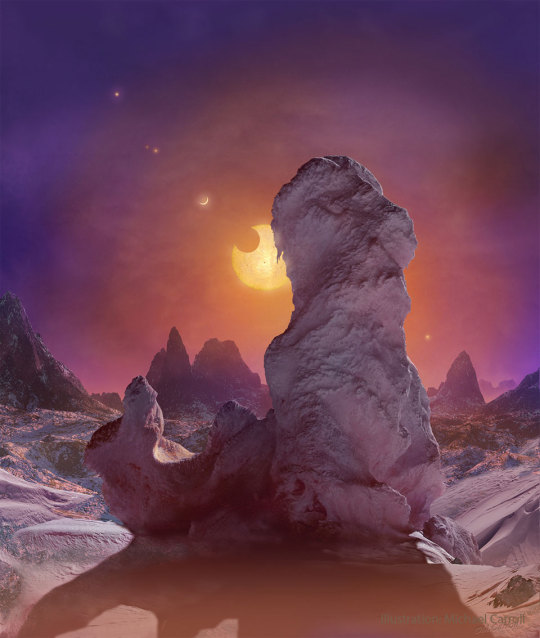
The Seventh World of Trappist-1 - Michael Carroll Seven worlds orbit the ultracool dwarf star TRAPPIST-1. A mere 40 light-years away, many of the exoplanets were discovered in 2016 using the Transiting Planets and Planetesimals Small Telescope (TRAPPIST) located in the Atlas Mountains of Morocco, and later confirmed with telescope including NASA's Spitzer Space Telescope. The TRAPPIST-1 planets are likely all rocky and similar in size to Earth, and so compose one of the largest treasure troves of terrestrial planets ever detected around a single star. Because they orbit very close to their faint, tiny star they could also have regions where surface temperatures allow for the presence of ice or even liquid water, a key ingredient for life. Their tantalizing proximity to Earth makes them prime candidates for future telescopic explorations of the atmospheres of potentially habitable planets. All seven exoplanets appear in the featured illustration, which imagines a view from the most distant known world of this system, TRAPPIST-1h, as having a rocky landscape covered in ice. Meanwhile, in the imagined background, one of the system's inner planets crosses in front of the dim, orange, nearly Jupiter-sized parent star. Astrophysicists: Browse 3,000+ codes in the Astrophysics Source Code Library
6 notes
·
View notes
Photo

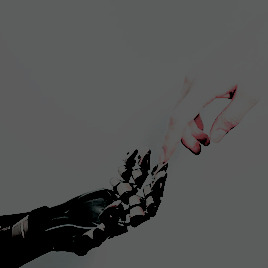
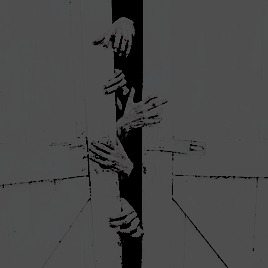
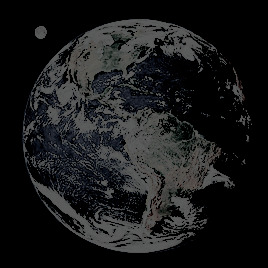
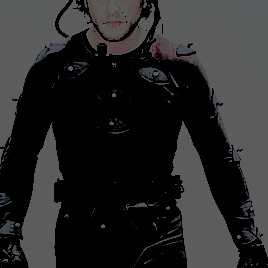

for our beautiful planet Earth, everything changed in the year 2097 --- the year an unexpected and completely unpredictable cataclysm struck: a hypernova explosion [click], when a (at the date) unidentified massive star collapsed into itself. although far enough from Earth to, in theory, provoke no consequences, the monstrous black hole that resulted from this event resulted itself, in turn, in a gravitational pull so strong that it affected the magnetic field of our sun. in a catastrophic chain of events, including successive solar flares [click] and the Earth’s own magnetic field being also affected, all of this culminated in an impoverished atmosphere and consequent levels of radiation that would not support life in the planet for much longer. having no other solution, then, and making use of the best technology available, around 0.01% of the global population departed Earth never to return, in search of a new, Earth-like planet to colonize.
the route was soon set towards the constellation Aquarius, and, more concretely, a red dwarf star named 2MASS J23062928-0502285 and more commonly known as TRAPPIST-1 [click]. in the early decades of 2000, the discovery of this star and the exoplanets that orbited it had made headlines around the world --- precisely, because some of them might harbor living conditions similar to those of Earth. after a journey that spanned a generation and lasted for 40 years at the speed of light, the remaining earthlings arrived at planet 2MASS J23062928-0502285 e, also known as TRAPPIST-1e [click] --- a planet similar to our fallen Earth in mass, radius, density, gravity, temperature, and stellar flux, as well as graced with a compact, hydrogen-free atmosphere and a solid, rocky surface. although tidally locked [click], and bearing temperatures much colder than what most of the human race was used to (ranging between −48 °C/ −55 °F and −27.1 °C/ −16.7 °F), the portions of land by the planet’s equator proved hospitable enough --- and, thus, small settlements were established to eventually grow and spread from there.
four more generations passed, and human life on TRAPPIST-1e became as normal as possible. the survivors of the original Earth, and of the space journey after it, ensured the passing of culture, habits, history, technology, and knowledge --- and the planet came to be known as Nova Earth, initially, and then as Theia. Theia [click] was a hypothesized ancient planet in the early Solar System, about the size of Mars, which might have collided with the early Earth around 4.5 billion years ago, leading then to the formation of the early Moon. to the now nova-terrestrials, or Theians, it seemed like a suitable tribute to their beloved home planet’s little sister.
for a few centuries, humans endured and rebuilt as much as they could of their former glory, attaining levels of progress and prosperity never before seen in their ancient home: the processes of nuclear fusion and fission were perfected and made safe to use, though now utilized for the sake of advancing technology and medicine rather than to promote wars; the force of gravity was truly understood and became controllable, able to be easily augmented or reduced according to the respective objective; string theory [click] was researched and developed to full maturity, which allowed for a much deeper understanding of quantization [click] and, in turn, of the dimensions of time-space.
eventually, and by means of artificial selection [click], the human genetic code itself began being modified and experimented with --- resulting in the birth of Theians who were stronger, faster, more intelligent, and who could live longer compared to the original Earth humans. a select few, inclusively, were chosen to undergo extreme bioengineering [click], accompanied by intensive training of the psychic capacities. these Super Theians, therefore, were not only merged with highly advanced and intricate macro (for example, prosthetic body parts) and nano (for example, chips implemented in their brains) technology, effectively becoming cyborgs rather than simple humans, but also developed their spiritual energy, known as Ki [click], to the full potential --- for example, becoming able to fly on their own by focusing this Ki, or to materialize it into a usable form of energy such as heat or electricity. given their superior capacities, the Super Theians were unanimously elected as the most suitable rulers for every budding country, and continued this era of prosperity and development.
nevertheless, in the year 300 (year 2437, in the Earth calendar), yet another tragedy awaited, when the inhabitants of planet 2MASS J23062928-0502285 h, also known as TRAPPIST-1h [click], invaded Theia --- whom, for all its technological advance, had yet not been able to detect other life forms in the rest of the TRAPPIST-1 system, and now risked to pay for it with its very existence. coming from a world somewhat similar but constantly plunged in glacial temperatures, these primitive creatures where mostly made of ice and compensated their lack of scientific arsenal with mysterious magical powers that allowed them to rise the fallen humans and convert them to mindless allies. and, having no need for food or heat or comfort, they quickly conquered Theia’s dark side that was always facing away from its star. for their unknown nature and characteristics, these beings became commonly referred to as the Others or the White Walkers, and the places taken by them came to be known as The Lands of Always Winter.
under this ruthless and unexpected threat, despite their superior technology and weapons, the Theian civilization quickly became fragmented, with struggles for power and eventual civil conflicts amongst them starting to appear frequently --- which, obviously, only tilted the odds against them even further. a couple decades of terrible war against the Others (and between rival human factions) ensued, decimating the population and transforming the habitable zone of the planet into mostly ruins and frozen wastelands. one resistance group, however, endured where most others were failing, due to their spirit of gregariousness and the extended leadership of several Super Theians: the Night’s Watch, so named for their objective to end this terrible period known as The Long Night, and to bring the dawn back to Theia. whilst fighting to defend the remaining human cities, the soldiers of the Night’s Watch also invested in research as much as they could and as much as the crumbling civilization still allowed them to. through work developed by an exceptionally wise and intelligent man, Aemon Targaryen, they were eventually able to clear the inconsistencies underlying topics such as negative energy [click], exotic matter [click], the Casimir effect [click], and causality [click] violation --- thus, devising the way to create a traversable Einstein-Rosen bridge [click], or wormhole, and, in turn, to travel back in time.
having come to the grim conclusion that little else could be done to stop the Others, the new goal for survival then became to fix past mistakes --- and either prevent/properly prepare for the invasion, or altogether find a solution to save the original Earth from oblivion. charged with this heavy and ultimate burden, the current commander of the Night’s Watch was chosen to navigate the spaceship also engineered by Dr. Aemon --- built with dark matter [click] and the recently discovered element katchin [click], and containing the most advanced computer systems ever known to Earth and Theia alike --- and, accordingly, named Hope. Hope crossed the wormhole, then, without any major incidents... and arrived at Earth, in the year 2019, for the very final attempt at hope for the human race.
some assorted details in this verse:
Jon is a Super Theian and, as such, gifted with superhuman speed/ strength/ reflexes/ intellect;
he has a small 998 number tattooed at the back of his neck, which is the indicator of his Super Theian number (every Super Theian has their own number, it’s a sort of identity mark);
during one of the most intense battles against the Others, he lost his right arm and had surgery to have a prosthetic implanted instead --- this artificial limb functions exactly like a real flesh one and has its own bioengineered nervous system, and can be attached and detached at the port by his right shoulder;
Hope is equipped with everything technology that you can imagine, and can produce virtually anything --- including a highly advanced 3d printer able to create something as massive as a house, for example, and to compress it into a portable capsule to be used whenever needed;
Jon’s weapon of choice is Longclaw, a long sword he usually wears strapped to his back --- the blade is made of dark matter just like Hope and therefore invisible to both the naked eye and any form of human-known radiation, becoming visible only when Jon activates it by focusing his Ki;
for decades now, Theians have been using pills and supplements as their main source of nourishment, and real food as we know it stopped existing entirely after the Others invaded and changed the planet’s climate --- therefore, don’t be surprised if Jon doesn’t know how to eat something as simple as a banana, for example, because he’s never actually seen one in his life;
due to the advanced medical knowledge and materials/techniques, as well as the genome of Super Theians, Jon’s cell regeneration is much quicker and more efficient than a normal human’s and, despite the many battles he’s fought, his body is entirely clean of scars or marks --- the exception being the patch of skin surrounding his port where the artificial arm connects;
besides the artificial arm, he also has a few different chips implanted in his brain since birth (as is the rule with most, if not all, Super Theians) that contribute to his enhanced senses and skills --- one, in particular, is linked to his right eye and allows for it to function like a computer, being able to, for example, produce X-ray vision or to analyze the elements any material or object is made of;
a Super Theian’s weakness comes laced with their cyborg nature, namely the possibility of interfering with the bioengineered circuits and connections pretty much like one would hack a computer system --- it is not easy to do, especially with how intricate and ingenious Theian technology is, but it is certainly possible and, in Jon’s particular case, the weakest spot would be his right eye chip, given that it is directly connected to the central nervous system and able to jam its entire functioning.
one final note:
this is a very flexible verse, that can easily accommodate any sort of crossover --- given that Hope can literally take Jon to any place in space and/or time. i purposefully left most roles vague, save for Aemon Targaryen (and even so this can easily be adapted), exactly so that this background can be usable by any muses. for example, your muse can be one of the invaders, instead of the Others, or they can be a Theian or Super Theian and travel along with Jon, or they can be a human that Jon encounters when arriving at Earth, or they can live in yet another completely different planet that Hope lands on --- the possibilities are endless! so if you’d ever like to fit your muse in this verse, just let me know and i’m sure we’ll plot something amazing.
#long post#ᵛᵉʳˢᵉ ✻ ᶤ’ˡˡ ᶠˡᵃᵖ ᵐʸ ᵇʳᵒᵏᵉᶰ ʷᶤᶰᵍˢ ᵃᶰᵈ ᵉʳᵃˢᵉ ᶤᵗ ᵃˡˡ ˢᵒᵐᵉᵈᵃʸ#「ᵃᵉˢᵗʰᵉᵗᶤᶜˢ」ʷʰᵃᵗ ᵉˡˢᵉ ᶜᵃᶰ ᶤ ᵈᵒ; ᵇᵉˢᶤᵈᵉˢ ᵃᵛᵉᶰᵍᵉ ʸᵒᵘˀ#「ᶜᵒᶰᶜᵉᵖᵗ」ᵗᶤᵐᵉ ˢʰᵃˡˡ ᶜᵒᵐᵖʳᵉˢˢ; ᵃˡˡ ᵉˣᶤˢᵗᵉᶰᶜᵉ ᵈᵉᶰᶤᵉᵈ#me: writes a sci-fi verse where it's perfectly acceptable to bend reality#also me: makes sure everything is as scientifically accurate as possible#i hope Sheldon Cooper is proud of me
19 notes
·
View notes
Text
Scientists use Kepler telescope data to uncover details about TRAPPIST-1 planet
Scientists use Kepler telescope data to uncover details about TRAPPIST-1 planet
This artist’s concept shows what the TRAPPIST-1 planetary system may look like, based on available data about the planets’ diameters, masses, and distances from the host star. Image & Caption Credit: NASA-JPL/Caltech
Data collected by NASA’s exoplanet-hunting Kepler Space Telescope has enabled scientists to uncover orbital information for the outermost planetof the unusual TRAPPIST-1 planetary…
View On WordPress
0 notes
Text
Major Discovery: 7 Earth-Size Planets Discovered Orbiting Nearby Star
Major Discovery: 7 Earth-Size Planets Discovered Orbiting Nearby Star
It’s something the likes of which astronomers have never seen: seven Earth-sized worlds orbiting a nearby star. And all of them may be capable of supporting life as we know it. (more…)
View On WordPress
#Earth-sized#Elisa Quintana#Goddard Space Flight Center#Michaël Gillon#trappist-1#TRAPPIST-1h#University of Liège in Belgium
0 notes
Text

APOD: The Seventh World of Trappist-1 (2/1/23) Seven worlds orbit the ultracool dwarf star TRAPPIST-1. A mere 40 light-years away, many of the exoplanets were discovered in 2016 using the Transiting Planets and Planetesimals Small Telescope (TRAPPIST) located in the Atlas Mountains of Morocco, and later confirmed with telescope including NASA's Spitzer Space Telescope. The TRAPPIST-1 planets are likely all rocky and similar in size to Earth, and so compose one of the largest treasure troves of terrestrial planets ever detected around a single star. Because they orbit very close to their faint, tiny star they could also have regions where surface temperatures allow for the presence of ice or even liquid water, a key ingredient for life. Their tantalizing proximity to Earth makes them prime candidates for future telescopic explorations of the atmospheres of potentially habitable planets. All seven exoplanets appear in the featured illustration, which imagines a view from the most distant known world of this system, TRAPPIST-1h, as having a rocky landscape covered in ice. Meanwhile, in the imagined background, one of the system's inner planets crosses in front of the dim, orange, nearly Jupiter-sized parent star. Astrophysicists: Browse 3,000+ codes in the Astrophysics Source Code Library © Michael Carroll
1 note
·
View note
Photo
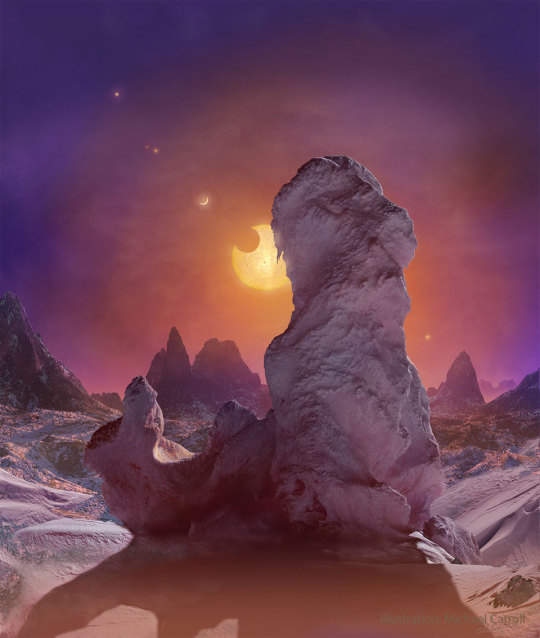
via NASA https://ift.tt/aXpMyHY
Seven worlds orbit the ultracool dwarf star TRAPPIST-1. A mere 40 light-years away, many of the exoplanets were discovered in 2016 using the Transiting Planets and Planetesimals Small Telescope (TRAPPIST) located in the Atlas Mountains of Morocco, and later confirmed with telescope including NASA's Spitzer Space Telescope. The TRAPPIST-1 planets are likely all rocky and similar in size to Earth, and so compose one of the largest treasure troves of terrestrial planets ever detected around a single star. Because they orbit very close to their faint, tiny star they could also have regions where surface temperatures allow for the presence of ice or even liquid water, a key ingredient for life. Their tantalizing proximity to Earth makes them prime candidates for future telescopic explorations of the atmospheres of potentially habitable planets. All seven exoplanets appear in the featured illustration, which imagines a view from the most distant known world of this system, TRAPPIST-1h, as having a rocky landscape covered in ice. Meanwhile, in the imagined background, one of the system's inner planets crosses in front of the dim, orange, nearly Jupiter-sized parent star.
0 notes
Text
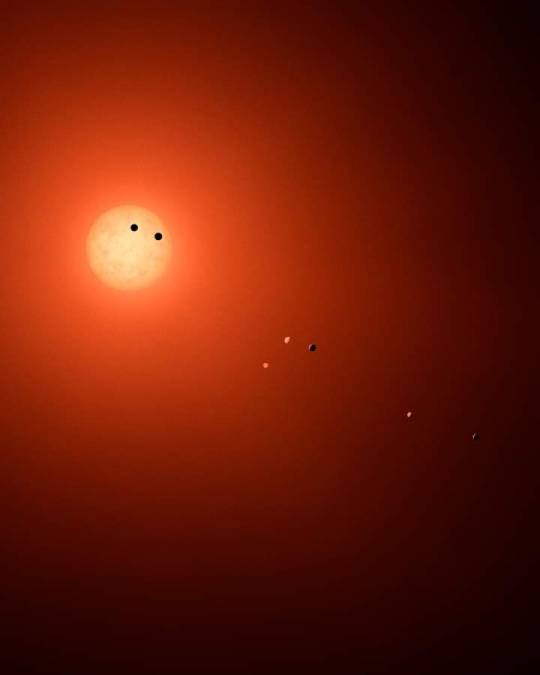
Esta ilustración muestra los siete planetas TRAPPIST-1 tal como se verían vistos desde la Tierra usando un telescopio ficticio increíblemente poderoso. Los tamaños y las posiciones relativas están correctamente a escala: Este es un sistema planetario tan pequeño que su sol, TRAPPIST-1, no es mucho más grande que nuestro planeta Júpiter, y todos los planetas tienen un tamaño muy parecido al de la Tierra. Todas sus órbitas caen bien dentro de lo que, en nuestro sistema solar, sería la distancia orbital de nuestro planeta más interno, Mercurio. Con órbitas tan pequeñas, los planetas TRAPPIST-1 completan un año en unos pocos días terrestres: 1,5 para el planeta más interior, TRAPPIST-1b, y 20 para el más exterior, TRAPPIST-1h.
Esta disposición particular de planetas con doble tránsito refleja una configuración real del sistema durante los 21 días de observaciones realizadas por el Telescopio Espacial Spitzer de la NASA a finales de 2016.
El sistema fue revelado a través de observaciones del telescopio espacial Spitzer de la NASA y el telescopio terrestre TRAPPIST (TRAnsiting Planets and PlanetesImals Small Telescope), así como otros observatorios terrestres. El sistema recibió su nombre del telescopio TRAPPIST.
Credit: NASA/JPL-Caltech/R. Hurt (IPAC)
1 note
·
View note
Text
5 sự thật thú vị về TRAPPIST-1
5 sự thật thú vị về TRAPPIST-1
Như chúng ta đã biết, vào 1h sáng ngày 23/2/2017 (tức 13h ngày 22/2/2017 theo giờ New York), NASA đã có cuộc họp báo công bố về các exoplanet – hành tinh ngoài hệ Mặt trời. Theo đó, NASA cho biết, kính thiên văn hồng ngoại Spitzer của NASA đã phát hiện được “Hệ Mặt trời 2.0” có 7 hành tinh có kích thước giống Trái đất quay quanh ngôi sao mẹ của chúng. Hệ Mặt trời version 2.0 này có tên là…
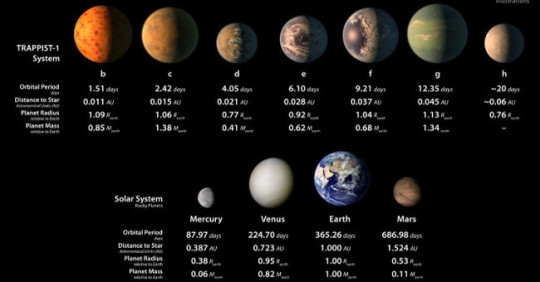
View On WordPress
0 notes
Text
Mua bia Chimay xanh, đỏ giá tốt Hà Nội
COMBO BIA CHIMAY SỐ 1 TẠI BIA RƯỢU QUÀ BẠN SẼ CÓ NGAY 12 CHAI #BIA_CHIMAY_XANH CAO CẤP GIÁ #850k,
DATE 2024
SHIP HÀNG NGAY SAU 1H ĐẶT HÀNG
CAM KẾT HÀNG NHẬP KHẨU 100%, SAI ĐỀN GẤP 10
Chimay Xanh 330ml nồng độ 9%, là loại bia đen có hương thơm mạnh mẽ của trái cây, hương thơm tươi mát của men bia tươi, thoảng hương hoa hồng và vị của mạch nha cháy.
Uống bia Chimay xanh phải thật chậm, cảm nhận từng dòng chảy qua môi, yết hầu rồi lan tỏa tới tới trái tim của người yêu bia, mê bia và biết thưởng thức bia
►Gọi Chimay là bia của tu sĩ không phải là loại bia chỉ dành cho tu sĩ mà là loại bia được các tu sĩ ở tu viện Scourmont (Bỉ) sản xuất từ giữa thế kỷ 19.
►Dây chuyền sản xuất bia Chimay hiện nay được hiện đại hóa bằng máy, sạch sẽ và đảm bảo tiêu chuẩn như tất cả các nhà máy bia trên thế giới. Để đảm bảo tính độc đáo, bia Chimay không bao giờ chi tiền để quảng cáo và chỉ được sản xuất trong cộng đồng tu sĩ Trappist. Mỗi mẻ bia Chimay đều được các vị tu sĩ kiểm nghiệm chất lượng kỹ lưỡng ( vị, bọt, nồng độ...) trước khi đem đi đóng chai.Đặc biệt shop có duy nhất 10 bộ ly chimay chính hãng bán giá gốc dành cho Fan BIA RƯỢU QUÀ
.................................................................................
#biachimay #biachimayxanh #giabiachimayxanh #biachimabi #muabiachimay #chimaygiagoc #chimayxanhbaonhieudo
Số điện thoại đặt hàng: 0982 184 670
Địa chỉ Hà Nội: Nguyễn Huy Tưởng, Thanh Xuân, Hà Nội
Ship hàng 24/7 nhanh chóng.
ONLINE: VIBER, ZALO, FB.
https://www.biaruouqua.com/p/bia-chimay_18.html
1 note
·
View note